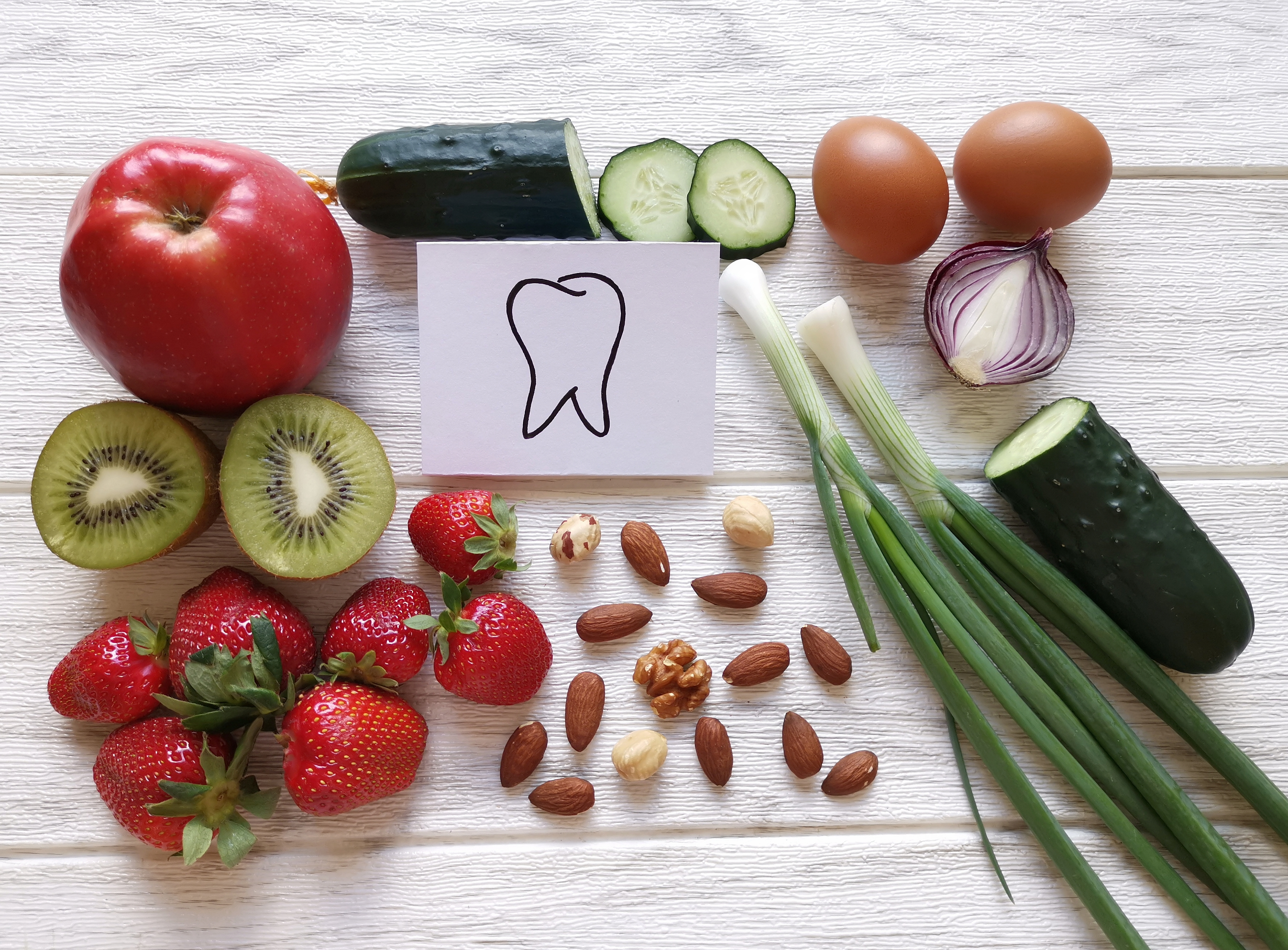From nutrition to daily habits, discover how the mouth is the gateway to what is happening in the rest of our body, writes Natalie Li.
For too long, we’ve treated the mouth as a separate entity – disconnected from the rest of our bodies. We’ve heard about the gut-brain axis, the intricate link between our digestion and our mental wellbeing. But what about the mouth?
Turns out, the oral microbiome – 700 different species of bacteria in our mouth – is not only the second largest microbiome after the gut, but also a crucial player in our overall health. And according to Dr. Victoria Sampson, a leading functional dentist, researcher and oral microbiome expert, it’s about time we started paying attention.
What is the oral microbiome?

“The oral microbiome is intimately connected with the gut microbiome,” Sampson explains. “What you’re doing in your mouth can very directly impact what happens in your gut, and vice versa.” She points to studies showing a direct correlation between periodontal disease – an infection that can damage the gums and jawbone – and gut health, with treatment of gum issues often leading to improvements in the gut microbiome.
The influence of the oral microbiome extends far beyond the oral cavity. Emerging research suggests a strong link between oral health and systemic diseases, including cardiovascular disease, diabetes and even Alzheimer’s disease.?The oral microbiome can function as a gateway for bacteria to enter the bloodstream, potentially triggering inflammation and contributing to the development of these chronic conditions.??
Are our mouths really the window to our health?

Sampson highlights ways an imbalanced oral microbiome, or dysbiosis, can harm the body. First, it fuels?low-grade inflammation. “These bad bacteria in your mouth are releasing inflammatory markers that can travel to the rest of the body,” she explains, potentially exacerbating conditions like rheumatoid arthritis and contributing to conditions like hypertension, cardiovascular disease, diabetes and even erectile dysfunction.
Second, it can lead to?bacterial superinfection. Those harmful bacteria can travel from the mouth to other parts of the body, causing infections. Sampson cites infective endocarditis and complications during pregnancy as just two examples. “With COVID, there was a lot of research showing that patients with gum disease had a much higher risk of complications,” she adds – her own research which examines the link between oral bacteria and secondary lung infections.
“This environmental influence appears to persist even after individuals move out of their parental homes, suggesting long-term effects established during upbringing,” says Dr James Goolnik, holistic dentist and director of?Optimal Dental Health.?
“If environment is the primary driver, this suggests that oral microbiome composition could be modifiable through lifestyle changes, probiotics or other interventions, which has exciting potential,” he adds.
However, when it comes to gum disease, genetic mutations play their part, says Sampson.
“For years, patients have faced stigma over gum disease, often told: ‘You just don’t brush enough’,” she explains, “this shaming has led many to believe they are solely responsible for their oral health issues.” But Sampson reveals that it’s not that simple.
“Some people have genetic mutations that increase their risk of gum disease by 300%. We have patients who brush five times a day and have immaculate oral hygiene, but their genetics or the strength of certain bacteria are just against them. It’s empowering for patients to understand that sometimes it’s not their fault.”
For years, patients have faced stigma over gum disease, often told: ‘You just don’t brush enough’
Gum disease is multifactorial, adds Sampson. “We have patients with genetic mutations who don’t have gum disease because they take particularly good care of their oral health. They’ve never smoked, and they use the right products. But we also see younger patients with these mutations who haven’t had issues yet. By identifying their high risk early, we can advise them to have hygiene appointments every three months and take extra care of their gums.”
The takeaway? “Brushing is important, but so is your diet, supplementation and receiving the right treatment at the right time,” Sampson concludes. “Understanding the complex factors behind gum disease can lead to better care and less blame for patients.”
Oral microbiome testing
Why has this crucial connection been underestimated for so long? Sampson believes research into the oral microbiome is simply lagging behind that of the gut. “The oral microbiome is kind of catching up,” she says. She also points to limitations in past testing methods, which often focused on the presence or absence of a few bacteria, rather than the complex interplay of bacteria, host response and virulence.
This is why Sampson, founder of THS Labs, has developed her own oral microbiome test to provide a more comprehensive picture of oral health.
Sampson has been incorporating oral microbiome testing into her daily practice with patients for many years. She found that?often the results of an oral microbiome test were not always accurate or not necessarily reflective of what she saw in a patient’s mouth.
She soon came to understand that it was not just absence or presence of bacteria that may indicate health and/or disease, but how the patient’s body?responded?to those bacteria. The tests on the market were not looking at a patient’s ability to fight disease and their genetic mutations that may predispose them to disease in the future.?
She explains: “Our test looks at the bacteria, how your body responds to the bacteria, how virulent certain bacteria are.” The test also generates personalised treatment recommendations, empowering patients to take control of their oral health.
The results have been striking. Sampson shares the story of a nutritional therapist who had been struggling with severe periodontal disease despite impeccable oral hygiene. “She had a very rare mutation… basically tripling her risk of gum disease,” Sampson reveals. By testing and personalising her treatment, including targeted supplements and nutritional advice, Sampson was able to halt the progression of her patient’s disease.
Food as medicine

There’s no doubt there is a clear link, as studies show, between oral health conditions, diet and nutrition.
Just like a garden needs the right nutrients to flourish, our oral microbiome thrives on a balanced diet.?Conversely, a diet lacking in essential nutrients or high in processed foods can disrupt this delicate balance, leading to dysbiosis – an imbalance in the microbial community.??
That’s why Goolnik is on?a quest to educate his patients on the importance of nutrition and holistic health. He says that our daily choices have a direct impact on the balance of bacteria in our mouths. With an in-house nutritional therapist and health coach at his clinic, and his current studies on ION’s Graduate Diploma in Integrative Functional Nutrition, Goolnik is well versed on this subject.
“Prebiotic-rich foods like fibre-filled fruits and vegetables – think apples, carrots, and leafy greens – feed beneficial bacteria. Probiotic foods, including yoghurt, kefir, sauerkraut and miso, introduce good bacteria to your system,” he explains.
“Healthy fats from sources like fish, nuts and seeds can reduce inflammation. Green tea and herbal teas, which contain polyphenols, help limit harmful bacteria, and staying hydrated with water ensures saliva production, which naturally cleanses the mouth.”
Goodbye to unhealthy habits
Goolnik also emphasises the importance of avoiding sugary and processed foods which feed harmful bacteria, leading to plaque build-up and cavities. Acidic drinks like fizzy beverages, energy drinks and excessive coffee can erode enamel and alter the microbial balance in your mouth. Alcohol and smoking both reduce saliva production and increase harmful bacterial growth.
Spot the signs of nutrient deficiencies
When it comes to the surprising connections between oral health and overall well-being, few know this better than Goolnik, pictured, who has been practicing for more than 25 years. “Many think seeing blood in the sink when brushing is normal. They are surprised to learn that I can spot signs of stress or nutritional deficiencies by looking at their mouths.

“Cracks at the corners of your mouth, known as angular cheilitis, can indicate a deficiency in vitamin B2 or iron. A red, swollen or smooth tongue, medically referred to as glossitis, might signal a lack of B vitamins such as B3, B6 or B12,” he continues.
“Pale gums or tongue can point to an iron or folic acid deficiency. If you notice bleeding or swollen gums, you might be deficient in vitamin C. Decayed or brittle teeth could suggest you need more vitamin D and calcium, while delayed healing or frequent mouth infections might mean you’re not getting enough zinc or vitamin A.”
A brush with greatness
Sampson advocates for a holistic approach to oral health, emphasising the importance of proper dental hygiene, a balanced diet, and targeted supplementation. She also stresses the importance of regular dental checkups and flossing, reminding us that 30% of bacteria lurks in the spaces between our teeth. And for those considering fluoride-free toothpaste, she recommends ensuring it contains hydroxyapatite for remineralisation.
In the future, Sampson hopes to see oral microbiome testing become the norm, empowering both patients and practitioners to understand and address the root causes of oral and systemic health issues. “You don’t know what’s going on unless you test,” she concludes.
The message is clear: a healthy mouth is not just about a dazzling smile – it’s a critical foundation for a healthy body.





